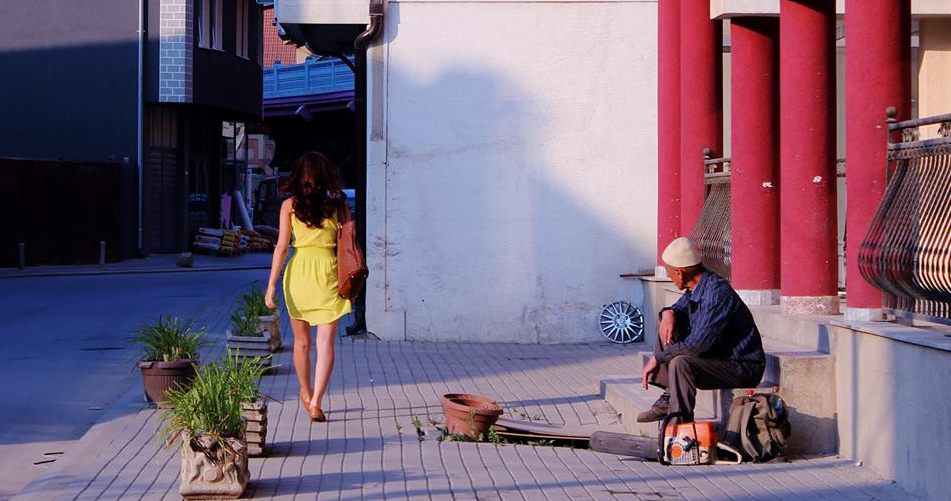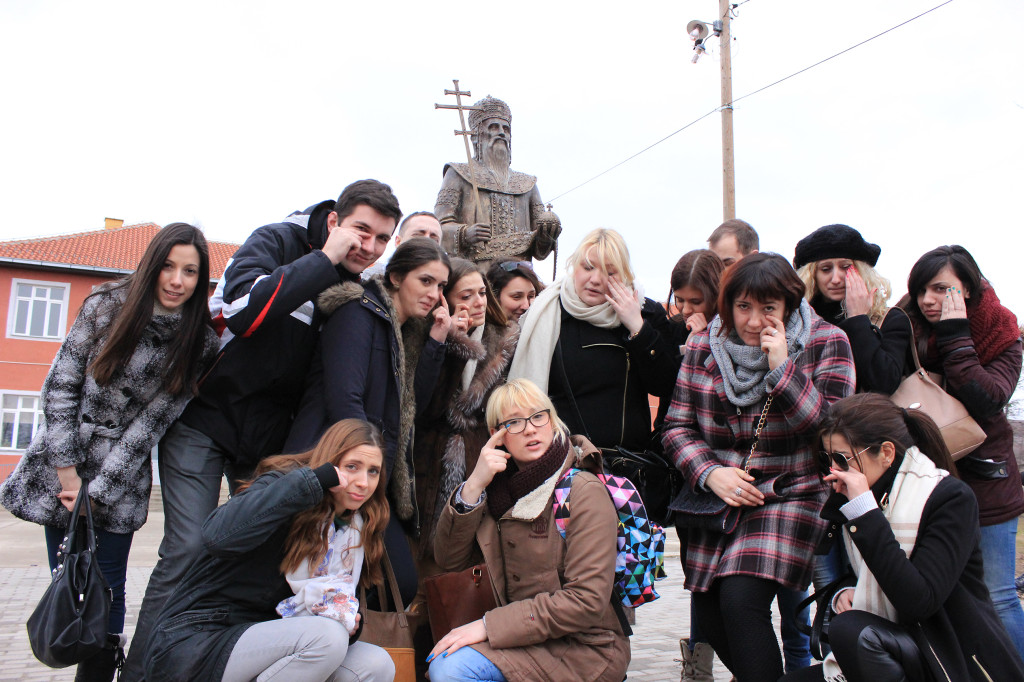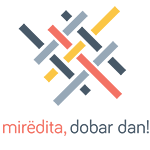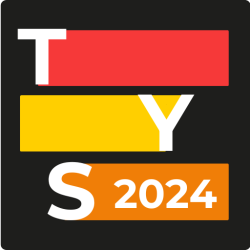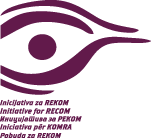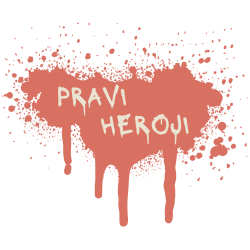Full Circle
The fear of unknown, new, foretold. Next, I went to the first taxi driver I saw and murmured something in English showing him the note, to which he nodded his head. When he asked me where I was from, I answered without thinking- Austria, and in that moment I bit my tongue knowing that with my knowledge of German I’d probably stay hungry in that same Austria. I did think that if I told him that I came from Serbia, he’d charge me with my kidneys and kept the change for himself.
Soon we got to Velanija, part of the city where I was staying, and I entered the house that was supposed to bemy already arranged accommodation. In one of the rooms there was an elderly man reading Koha Ditore, and when I explained him the reason of my arrival he asked me where I was from. This time, I couldn’t exactly lie, so I told him I was from Serbia, so he “switched” to Serbian immediately and told me that my group was staying about twenty meters down the street in a yellow house on my right. Upon seeing my frozen look and paralyzed body, he just smiled and said: “Actually, it’s orange”. Since I did have, like majority of people from my surrounding, numerous prejudices about Kosovo, things waiting for me when I go to the south and Albanians in general, every day of my visit was a new demystification of all those stereotypes I was taught- from my first history book to the last newscast before my trip to Prishtina. Actually, that month I spent in Prishtina in a summer program named American University in Kosovo is one of the best experiences in my life! You are allowed to speak Serbian freely in Prishtina’s city centre, the shops are full of things from Serbia, and good restaurants and nightlife are no worse than the one in Belgrade. The people I met in Kosovo don’t resemble that “Balkan’s residue” described by Cosic or our prejudices of Albanian terrorists or organ traders , but a world close to ours, sharing the same problems, dressing similarly or same, listening to similar or the same music as any 20-year-old in Belgrade or Sarajevo. Finally, no matter what city or country, you’ll always connect with people and not the buildings, street or national cuisine.
My relationship with Prishtina started changing from that summer on completely and became unexplainable. The city that is not objectively speaking, neither the happiest not the cleanest place for living, yet still a city filled with youth, energy and cosmopolitan spirit (it is full of foreigners and you’ll hear even more English than in Belgrade). It is that subtle attraction of this city which makes you addicted to its various clubs, traditional restaurants and other classy places. However, last week’s (now traditional) post-exam retreat in Kosovo was marked by two things- Trepca and Jablanovic.
What happened in Trepca several days ago embodies strong symbolism. The process of the fall of Yugoslavia has gone full circle and came back to where it all had started. More than quarter of the century ago, in 1989, coal-millers of Stari Trg (one of the coals located in Trepca) began a protest which left permanent consequences at the area from Triglav to Djevdjelija. Of course, the main reason for protesting was not the abolition of work, but most certainly it represented point of no return, although it didn’t look like that. Trepca is even nowadays, point of argument, but the conditions and roles have changed. Together with raising social dissatisfaction and economical non-perspectivity, Trepca is one of the main ideas of current insurgency which is occurring on the streets of Prishtina with the motto “We will give away our lives, but not Trepca”.
The second thing that set Kosovo’s public on fire was the statement of the minister Jablanovic in which he called people who threw rocks at busses with Serbs from Djakovica during the Christmas holidays, savages. Kosovo’s public had sharp remarks to Jablanovic, denoting that by saying “savages” he offended the families of the people that had disappeared or had been murdered and they demanded his resignation. During our meeting with him, I was assured that the expression was meant only to people throwing rocks, but on the other hand, I was also assured how little minister Jablanovic knew about what had happened in Djakovica, for he said as an excuse that he was not there therefore he could not know what happened in ’98 or ’99.
Still, this visit to Kosovo, besides political misunderstandings, massive protests and broken windows on the Government of Kosovo was special because I took part in taking around twenty young people on the one and only tour de Kosovo- Pristina, Gracanica, Gazimestan and Mitrovica (both sides of the bridge). That was the chance to see the two-years-ago me in the eyes of my colleagues, peers that had their first touch with “the other side”. Our goal is to deconstruct every media stereotype about life at Kosovo and about Kosovars/ Kosovacs – living in an enclave, speaking Serbian in the Mother Theresa Street (similar to Knez Mihailova in Belgrade), driving expensive cars with KM license plates (false registration plates in order to avoid paying the taxes), non-paying for electricity and water; next we have simulating Aleksandar Vucic’s tears (and we were pretty good at it), discussing whether we should say Kosovo or Kosovo and Metohija, coming back with all your organs, kissing an Albanian, crossing the administrative line/state border (and have a stamp in your passport to prove it),sharing the fact that in Mitrovica there is the largest number of flags per square meter (on both sides of the bridge), etc. I am sure that somebody from the group that visited Prishtina recently would want to go back there. Will they lie about where they’re from?
Photo credits (main photo): Frits Brouwer

